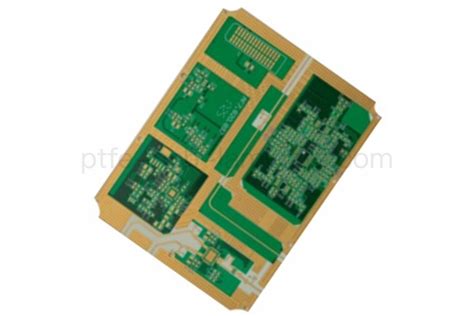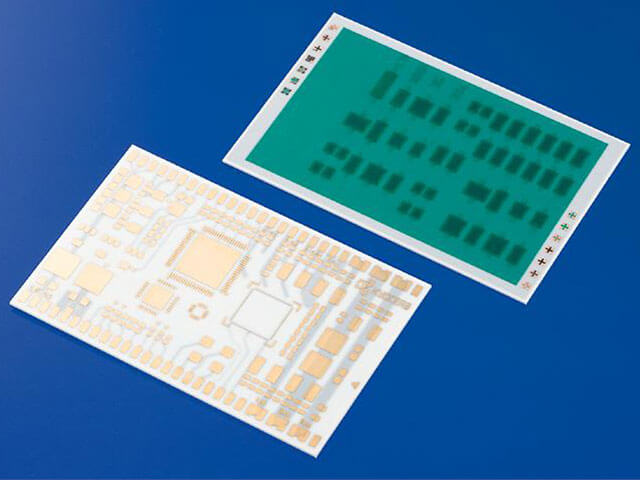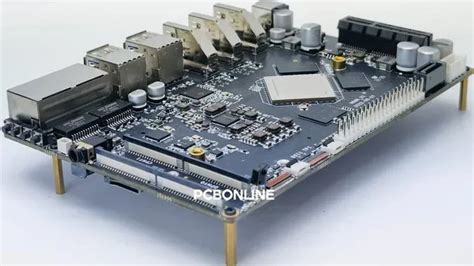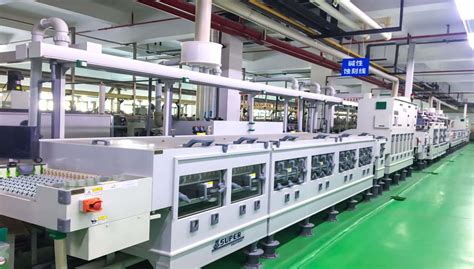PCB Lamination: A Comprehensive Guide
Introduction
Printed Circuit Boards (PCBs) are the backbone of modern electronics, providing the necessary platform for mounting and interconnecting electronic components. The process of PCB manufacturing involves several critical steps, one of which is lamination. PCB lamination is the process of bonding multiple layers of materials together to form a solid, durable, and functional PCB. This article delves into the intricacies of PCB lamination, exploring its importance, the materials involved, the lamination process, and the challenges associated with it.
Importance of PCB Lamination
PCB lamination is a crucial step in the manufacturing of multi-layer PCBs. It ensures that the various layers of the PCB are securely bonded together, providing mechanical stability and electrical insulation between the conductive layers. The lamination process also plays a significant role in determining the overall performance, reliability, and longevity of the PCB.
Mechanical Stability
The lamination process ensures that the different layers of the PCB are firmly bonded together, providing the necessary mechanical strength to withstand the rigors of assembly, operation, and environmental stresses. This is particularly important for multi-layer PCBs, which can have dozens of layers.
Electrical Insulation
Proper lamination ensures that the conductive layers are adequately insulated from each other, preventing short circuits and ensuring reliable electrical performance. The dielectric materials used in the lamination process play a critical role in maintaining the electrical integrity of the PCB.
Thermal Management
The lamination process also affects the thermal properties of the PCB. Properly laminated PCBs can efficiently dissipate heat generated by electronic components, preventing overheating and ensuring reliable operation.
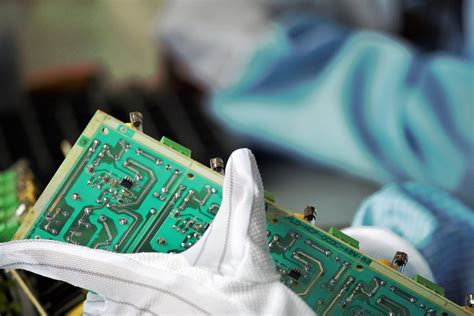
Materials Used in PCB Lamination
The materials used in PCB lamination are carefully selected to meet the specific requirements of the PCB, including electrical, thermal, and mechanical properties. The primary materials involved in the lamination process include:
1. Prepreg
Prepreg, short for pre-impregnated, is a fiberglass material impregnated with a resin that is partially cured. It acts as the adhesive that bonds the layers of the PCB together during the lamination process. The resin in the prepreg flows and cures under heat and pressure, forming a solid bond between the layers.
2. Copper Foil
Copper foil is used to create the conductive layers of the PCB. It is typically laminated onto the prepreg and core materials to form the conductive traces and planes. The thickness of the copper foil can vary depending on the specific requirements of the PCB.
3. Core Material
The core material is the rigid base of the PCB, typically made of fiberglass-reinforced epoxy resin (FR-4). It provides the structural foundation for the PCB and is often used as the central layer in multi-layer PCBs. The core material is pre-laminated with copper foil on both sides.
4. Resin
The resin used in the prepreg and core materials is typically an epoxy resin, although other types of resins, such as polyimide, may be used for specialized applications. The resin provides the necessary electrical insulation and mechanical bonding between the layers.
5. Release Film
Release film is used during the lamination process to prevent the prepreg from sticking to the press plates. It is typically made of a non-stick material, such as PTFE (polytetrafluoroethylene), and is removed after the lamination process is complete.
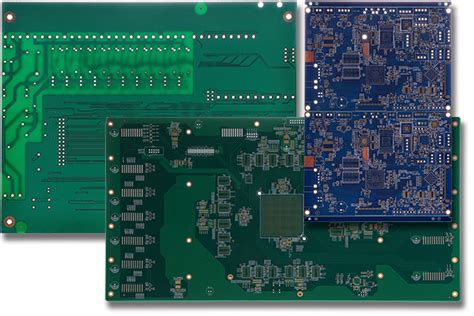
The PCB Lamination Process
The PCB lamination process involves several steps, each of which must be carefully controlled to ensure the quality and reliability of the final product. The process can be broadly divided into the following stages:
1. Layer Preparation
Before the lamination process begins, the individual layers of the PCB must be prepared. This involves cleaning the copper foil and core materials to remove any contaminants that could affect the bonding process. The layers are then stacked in the desired order, with prepreg sheets placed between each layer to act as the adhesive.
2. Stacking and Alignment
The layers are carefully stacked and aligned to ensure that the conductive traces and vias are properly registered. Misalignment during this stage can result in electrical shorts or open circuits, rendering the PCB unusable. Alignment pins or registration holes are often used to ensure precise alignment.
3. Lamination Pressing
The stacked layers are placed in a lamination press, which applies heat and pressure to bond the layers together. The press typically consists of two heated platens that compress the layers between them. The temperature and pressure are carefully controlled to ensure that the resin in the prepreg flows and cures properly, forming a solid bond between the layers.
4. Cooling and Curing
After the lamination pressing is complete, the PCB is allowed to cool and cure. This step is critical to ensure that the resin fully cures and that the PCB achieves the necessary mechanical strength and electrical properties. The cooling process must be controlled to prevent warping or other dimensional changes.
5. Post-Lamination Processing
Once the PCB has cooled and cured, it undergoes several post-lamination processes, including drilling, plating, and etching. These processes create the necessary vias, through-holes, and conductive traces that allow the PCB to function as intended.

Challenges in PCB Lamination
Despite its importance, the PCB lamination process is not without its challenges. Several factors can affect the quality and reliability of the laminated PCB, including:
1. Delamination
Delamination occurs when the layers of the PCB separate due to inadequate bonding during the lamination process. This can be caused by insufficient heat or pressure, contamination of the materials, or improper curing of the resin. Delamination can lead to electrical failures and reduced mechanical strength.
2. Warping and Twisting
Warping and twisting are common issues in PCB lamination, particularly for large or thin PCBs. These issues can be caused by uneven heating or cooling, improper stacking of the layers, or differences in the thermal expansion coefficients of the materials. Warping and twisting can affect the dimensional accuracy of the PCB and make assembly difficult.
3. Void Formation
Voids are air pockets that can form between the layers of the PCB during the lamination process. Voids can be caused by trapped air, insufficient resin flow, or contamination of the materials. Voids can reduce the mechanical strength of the PCB and affect its electrical performance.
4. Resin Bleed
Resin bleed occurs when excess resin flows out from between the layers during the lamination process. This can be caused by excessive pressure or temperature, or by using too much prepreg. Resin bleed can result in uneven layer thickness and affect the electrical properties of the PCB.
5. Thermal Management
Managing the thermal properties of the PCB during the lamination process is critical to prevent overheating and ensure proper curing of the resin. Inadequate thermal management can lead to incomplete curing, delamination, or other defects.
Advances in PCB Lamination Technology
As the demand for more complex and high-performance PCBs continues to grow, advances in lamination technology are being developed to address the challenges associated with traditional lamination processes. Some of the recent advancements include:
1. Low-Flow Prepregs
Low-flow prepregs are designed to minimize resin bleed and improve dimensional stability during the lamination process. These prepregs have a controlled resin flow that allows for more precise bonding between the layers, reducing the risk of voids and delamination.
2. High-Tg Materials
High-Tg (glass transition temperature) materials are being increasingly used in PCB lamination to improve the thermal performance of the PCB. These materials can withstand higher temperatures without losing their mechanical or electrical properties, making them ideal for high-performance applications.
3. Automated Lamination Systems
Automated lamination systems are being developed to improve the precision and consistency of the lamination process. These systems use advanced sensors and control algorithms to monitor and adjust the temperature, pressure, and alignment during the lamination process, reducing the risk of defects and improving overall quality.
4. Advanced Resin Systems
New resin systems are being developed to improve the electrical and thermal properties of the PCB. These resins offer better insulation, higher thermal conductivity, and improved mechanical strength, making them suitable for a wide range of applications, including high-frequency and high-power electronics.
Conclusion
PCB lamination is a critical step in the manufacturing of multi-layer PCBs, ensuring the mechanical stability, electrical insulation, and thermal management of the final product. The process involves the careful selection and preparation of materials, precise stacking and alignment, and controlled application of heat and pressure. Despite the challenges associated with the lamination process, advances in technology are continually improving the quality and reliability of laminated PCBs. As the demand for more complex and high-performance electronics continues to grow, the importance of PCB lamination will only continue to increase.

